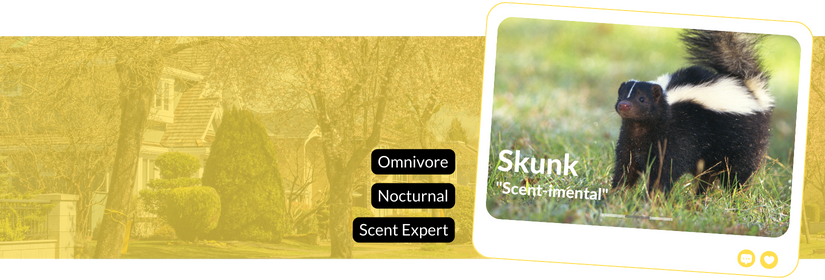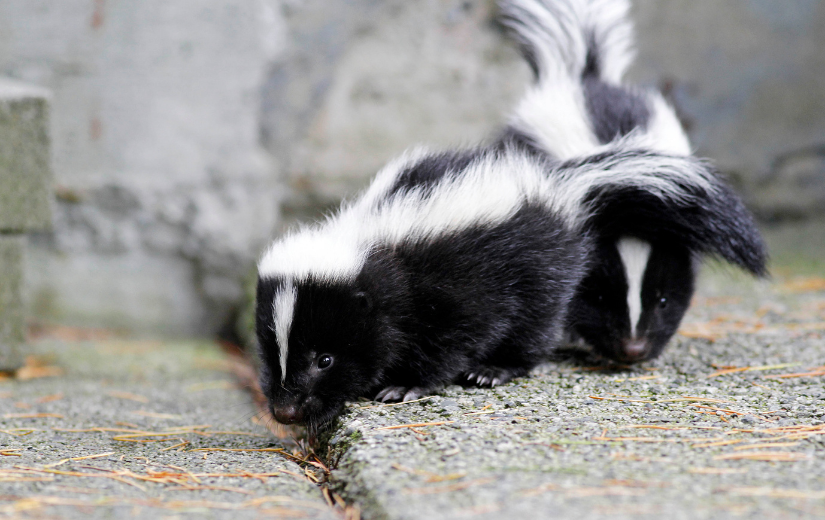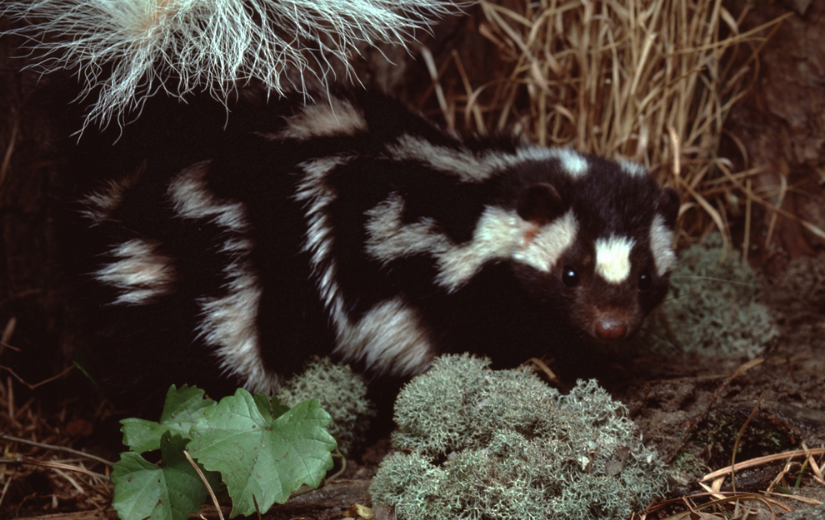Meet your urban wildlife neighbours: what you need to know about skunks

Just thinking about skunks can bring up “scent”-imental feelings for some people, and we often forget to appreciate skunks as shy and gentle neighbours.
How much do you know about your neighbours?
Slow speed ahead
Skunks are nocturnal animals with poor eyesight and limited climbing skills. They are generally slow-moving animals and prefer to stay quietly away from people. Skunks have large feet and claws designed for digging up bugs, and the typical sharp teeth of a carnivore. They use their teeth and claws for their omnivorous diet of insects, rodents, and sometimes fruits and nuts.

Close encounters of the smelly kind
Although skunks have all the equipment to bite and scratch, they rarely do. They are limited by their slow speed and prefer to stay hidden instead of running away or attacking. Their main defence is to spray, which they use only as a last resort or when startled, cornered or attacked. A nervous skunk may give you warning signs like growling, hissing or stamping their front feet – all this to say “STAY BACK”.
If you encounter a skunk, leash up or pick up any pets with you, and back away slowly and quietly. Don’t let kids or pets chase or harass skunks, or they’ll face the stinky consequences!
If you, your dog or other pets have been sprayed by a skunk, combine:
- 1 litre of 3% hydrogen peroxide
- 60 mL (1/4 cup) baking soda
- 5 mL (1 tsp) liquid laundry or dish soap
Clean the affected areas with this solution. Avoid using the solution in pets’ eyes. Rinse with water and repeat if necessary.

Skunks, skunks, everywhere…?
Did you know that there are actually two species of skunk in B.C.? Most people are familiar with the striped skunk, with the classic black body with two bold, white stripes running down their back and tail. The striped skunk is common across most of North America, from southern Canada all the way down to Mexico.
Less familiar is the western spotted skunk, present only in the most southwestern parts of B.C. Spotted skunks are smaller than striped skunks, and have a unique black and white pattern of both spots and stripes. Spotted skunks will display a curious behaviour of doing handstands as a form of intimidation. This is your signal to back off before they lower and spray.
Did you know that there are no skunks on Vancouver Island? The isolated nature of the Island means many species haven’t crossed over – including coyotes, porcupines, mountain goats and moose. Similarly, there are no skunks on Haida Gwaii, the Gulf Islands, or other coastal islands.

How to be a good neighbour to skunks
Some of the most common conflicts with skunks aren’t problems for us at all. Because skunks are poor climbers, they may get trapped in ground-level window wells or other depressions, and usually need help to escape:
- You can gently scoop them out with a snow shovel, or place a plank so they can climb out on their own. Wrap a towel around the plank to increase traction, and place it at a less than 45° angle.
- For deeper spots, use a rope to lower a box with smelly food (e.g., cat food) inside. Once the skunk is inside, pull the box up and allow them to walk free.
Skunks have narrow noses and a keen sense of smell which gets them into trouble sometimes. Wildlife rehabilitators often handle situations where skunks get their heads or noses stuck into tight spots like lids or jars. Don’t try to pull a skunk out of a stuck situation – call the BC SCPA for advice at 1-855-622-7722.
Skunks may also try to den in backyard porches, sheds, crawl spaces, culverts or woodpiles. You can help prevent skunk problems:
- Never feed skunks – this causes them to lose their fear of humans
- Secure garbage bins and compost
- Pick up fruit fallen on the ground
- Don’t let bird feeders overflow with seeds
- Feed pets inside, don’t leave pet food outside
- Maintain your home – maintain sheds, garages and access to crawl spaces and attics to prevent skunks from moving in
Once a skunk has moved in, trapping is not the solution. Read our best practice sheet (PDF) on how to handle skunk problems or removal from your home.
If you have to remove a skunk, call an AnimalKind company that uses exclusion techniques instead of trapping/relocating or killing.
Stay informed!
Get AnimalKind news delivered to your inbox 4 to 6 times a year.
The BC SPCA processes your personal information to provide you with the products and services you have requested as well as for advertising and analytics purposes. More information on uses and how you can opt out may be found in our privacy policy.